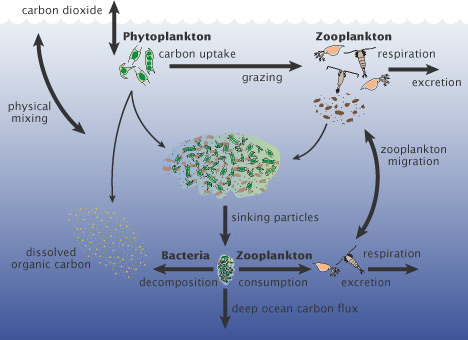Definition

Derived from the Greek words phyto (plant) and plankton (made to wander or drift), phytoplankton are microscopic organisms that live in watery environments, both salty and fresh.
Some phytoplankton are bacteria, some are protists, and most are single-celled plants. Among the common kinds are cyanobacteria, silica-encased diatoms, dinoflagellates,green algae, and chalk-coated coccolithophores.
Importance of phytoplankton
The food web
Phytoplankton are the foundation of the aquatic food web, the primary producers, feeding everything from microscopic, animal-like zooplankton to multi-ton whales. Small fish and invertebrates also graze on the plant-like organisms, and then those smaller animals are eaten by bigger ones.
Phytoplankton can also be the harbingers of death or disease. Certain species of phytoplankton produce powerful biotoxins, making them responsible for so-called “red tides,” or harmful algal blooms. These toxic blooms can kill marine life and people who eat contaminated seafood.
Climate and the Carbon Cycle
Through photosynthesis, phytoplankton consume carbon dioxide on a scale equivalent to forests and other land plants. Some of this carbon is carried to the deep ocean when phytoplankton die, and some is transferred to different layers of the ocean as phytoplankton are eaten by other creatures, which themselves reproduce, generate waste, and die.
